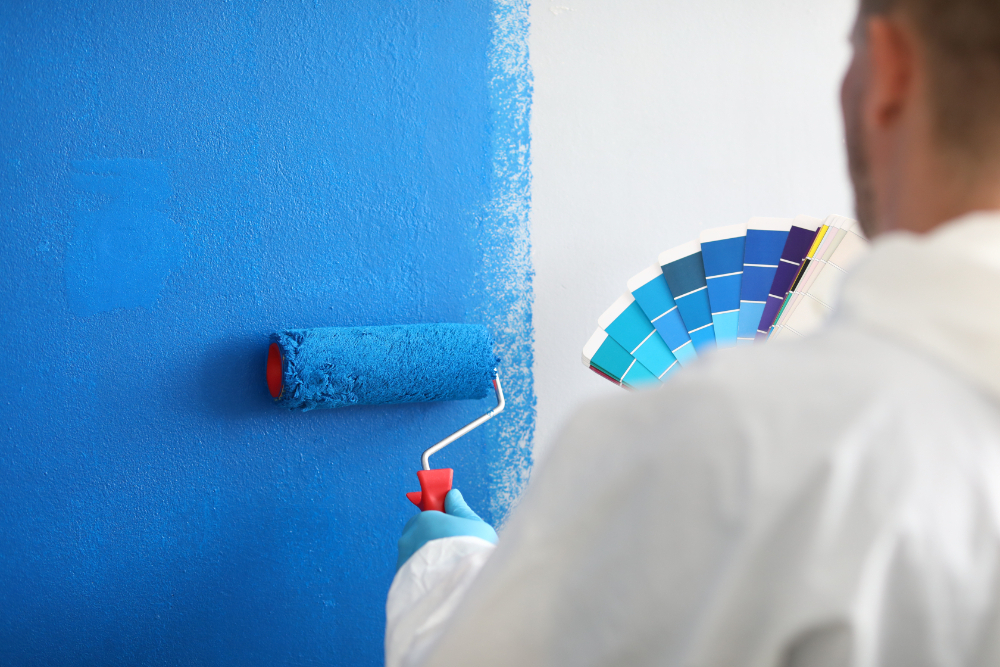Discover how to choose the right paint for your home. From considering room functions to differentiating water and oil-based options.
Think About the Room’s Purpose
When choosing paint for your home, it’s important to think about the purpose of each room. The way a room is used can help guide your choice of colour, finish, and even the type of paint. By considering the function of the space, homeowners can make better decisions that improve both their home's appearance and practicality.
For example, bedrooms are often places for rest and relaxation. Therefore, softer, calming colours like light blues, gentle greens, or warm neutrals work well in these spaces. These shades help create a peaceful mood and make the room feel comfortable and inviting.
On the other hand, living rooms and kitchens are areas where people gather and spend time together - so warmer colours like soft yellows, beiges, or light greys can make these spaces feel welcoming and full of life.
Bathrooms and kitchens need more than just a nice colour - they need paint that can handle moisture and regular cleaning. Therefore, it’s best to choose durable, washable paint with a moisture-resistant finish, such as satin or semi-gloss. These types of paints protect the walls and keep them looking fresh for longer. By thinking carefully about how each room is used, homeowners can choose paints that look good and suit the needs of the space.
Pick the Right Paint Finish
When choosing the right paint for your home, it’s not just the colour that matters, the finish is just as important. There are several paint finishes to choose from, including matt, eggshell, satin, semi-gloss, and gloss. A matt finish gives a smooth, non-reflective appearance, which is ideal for hiding small marks or uneven areas on walls and ceilings. However, it's less durable and harder to clean, so it’s better suited for low-traffic areas like bedrooms.
Eggshell and satin finishes have a soft sheen and are more durable than matt paints. These finishes are easier to clean, making them a popular choice for kitchens and children’s bedrooms.

Semi-gloss and gloss finishes are the shiniest and most hard-wearing paint finishes. Gloss and semi-gloss are great for high-use areas such as bathrooms, kitchens, skirting boards, and doors. These finishes are moisture-resistant and can be cleaned easily, however, they tend to show imperfections more clearly, so surfaces should be prepared carefully before painting.
Choosing the right finish helps make sure each room looks its best and holds up well to everyday use. Selecting the right paint finish allows you to match the paint to the room’s function, light levels, and expected wear and tear.
Know the Difference Between Water-Based and Oil-Based Paints
Choosing between water-based and oil-based paints is an important decision when decorating your home. Water-based paint is the more popular choice for modern interiors since it dries faster than oil-based paints. It also produces less odour and can be cleaned with just soap and water. Water-based paint also retains its colour better over time and is less likely to turn yellow, making it a great option for a clean, bright and long-lasting finish.
Oil-based paint is known for its stronger smell, higher durability, and it's smooth, glossy finish that can resist marks and scuffs. This makes oil-based paint ideal for doors, skirting boards, and window frames. However, oil-based paint can become discoloured over time, particularly in rooms without much sunlight.
For high-use areas or rooms where a resistant and durable finish is needed, oil-based paint may be best. Whereas for walls or rooms where drying time is a concern, water-based paint is usually the better choice. Understanding how these paints differ allows homeowners to create a finish that looks great and also stands the test of time.
Test Paint Samples Before Deciding
Trying out paint samples before buying a full tin is a valuable step for any homeowner planning to decorate their home. Colours can look quite different once it's applied to your own walls, depending on the lighting, room size and surface texture. A shade that looks perfect on a colour chart or in a shop might not suit your space at all once it's dried. Therefore, it's important to test the paint colour before you commit to it.
Lighting also plays a big role in how a colour appears, as both natural and artificial light can change the feel of a colour. A paint that looks perfect online or in the shop might look too dark or too bright when it's applied at home. By testing a few samples on your wall beforehand, you can check how each one looks at different times of the day and under different lighting conditions.
Paint can also look different depending on the type of surface it's applied to. A smooth plastered wall can reflect light differently than a textured surface, and sample testing helps you see how the paint reacts to the surface.

Sample testing also lets you compare similar colours side by side and decide on the best one. Some shades can be slightly warmer or cooler than others, and seeing them on your own wall makes it easier to choose the one that suits your room the best.
Using paint samples also helps you avoid expensive mistakes. Buying full tins of paint that you later decide not to use can be a big waste of your money and time. By trying a few small pots first, you can confidently decide which paint type and colour you'll use.
In short, testing paint samples helps ensure that the final result matches your vision for your home.
Painters & Decorators Manchester
Bill McShannon Painter & Decorator provides professional interior painting and decorating services that can transform your home. We apply our skill and expertise to give you a smooth, lasting finish that suits your style.


